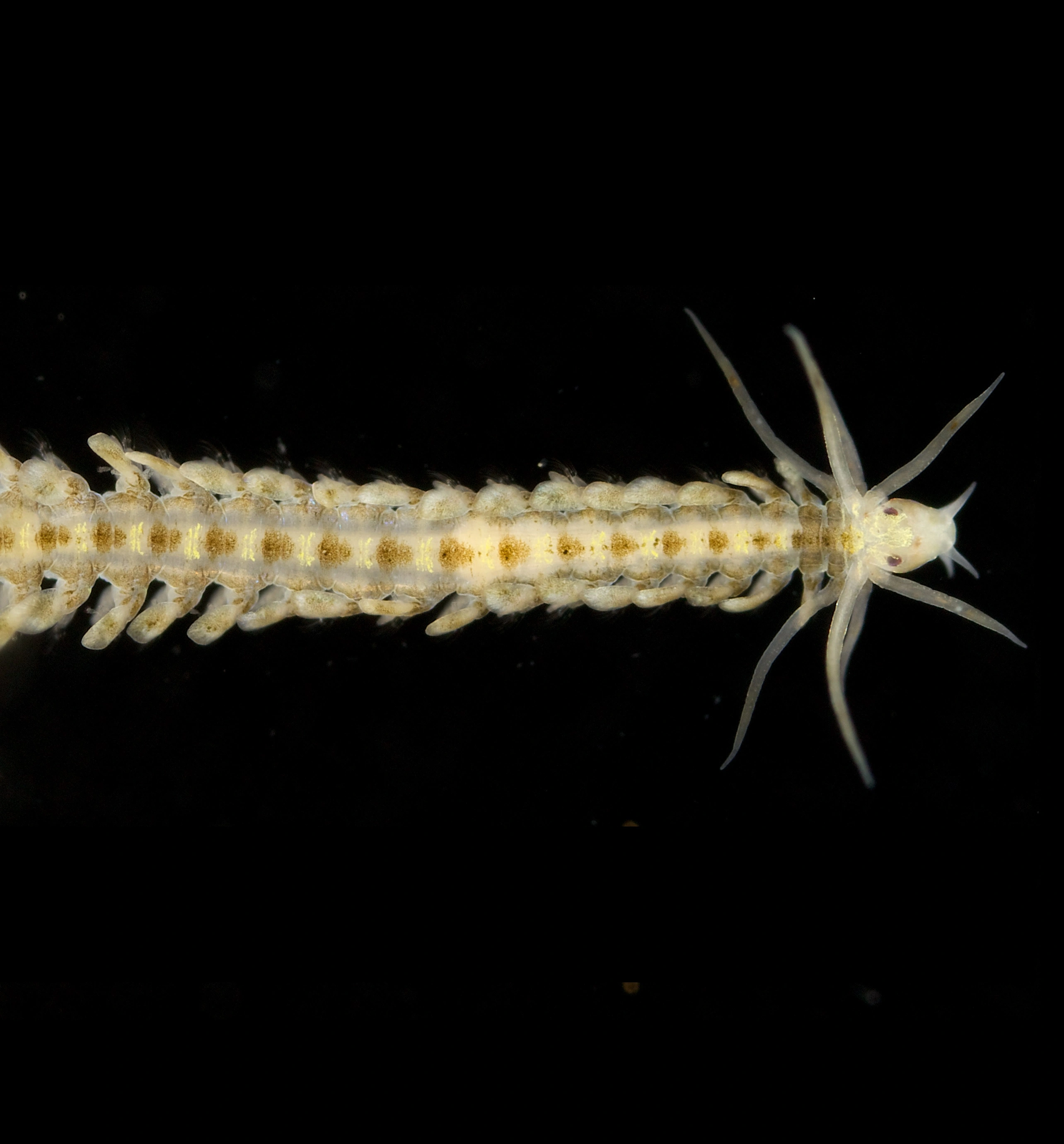Phyllodoce mucosa
Phyllodoce mucosa
This is a common bristle worm in Norway inhabiting shallow water sediments. Phyllodoce mucosa is easily recognised by the characteristic colour pattern when alive. Animals are whitish with a large yellow spot behind the eyes, and also a large brown spot flanked by two yellow spots on each segment.
- Innhold
- Measurements
- Characteristics
- Look-alikes
- Biology, ecology and behaviour
- Habitat
- Recommended citation
Measurements
Phyllodoce mucosa
Up to 5 cm long with at most 160 segments.
Characteristics
Living specimens are recognised by its colour pattern. It is whitish with a large yellow pigment spot on the dorsal side of prostomium, behind the eyes. In addition, there are two yellow pigment spots on each segment. Furthermore, it has brown pigmentation on the dorsal side of the prostomium, anterior to the eyes on the dorsal side in the space between each segment, and in the median part of all dorsal cirri along the body.
Look-alikes
This species is easily confused with Phyllodoce maculata which has a similar type of pigmentation. However, P. maculata lack the brown pigmentation on the prostomium in front of the eyes and lack the distinct yellow pigmentation on segment 2 typical of P. mucosa. Furthermore, it has only one central yellow spot on each segment instead of two, as in P. mucosa.
Biology, ecology and behaviour
Reproduction occur in early spring, at least in the south-western part of Denmark, where a substantial number of female and male individuals congregate into a ball of worms. The female produces a slimy sac with eggs which are fertilized with sperms from the male. The early part of the larval development takes place in the slimy sac, and later, larvae are swimming in the water column feeding on plankton. Nothing is known on feeding strategies of the adult worms.
Habitat
Phyllodoce mucosa lives in shallow waters down to about 20 meters depth on sand and muddy sediments.
Recommended citation
Nygren A. Pyllodoce mucosa. www.artsdatabanken.no/Pages/313959. Downloaded <year-month-day>.


